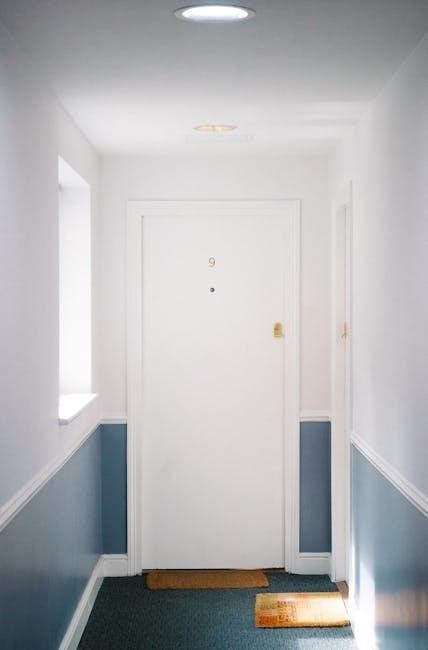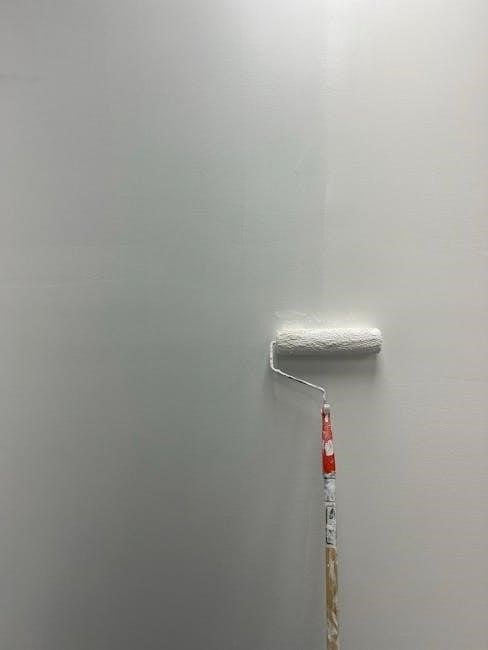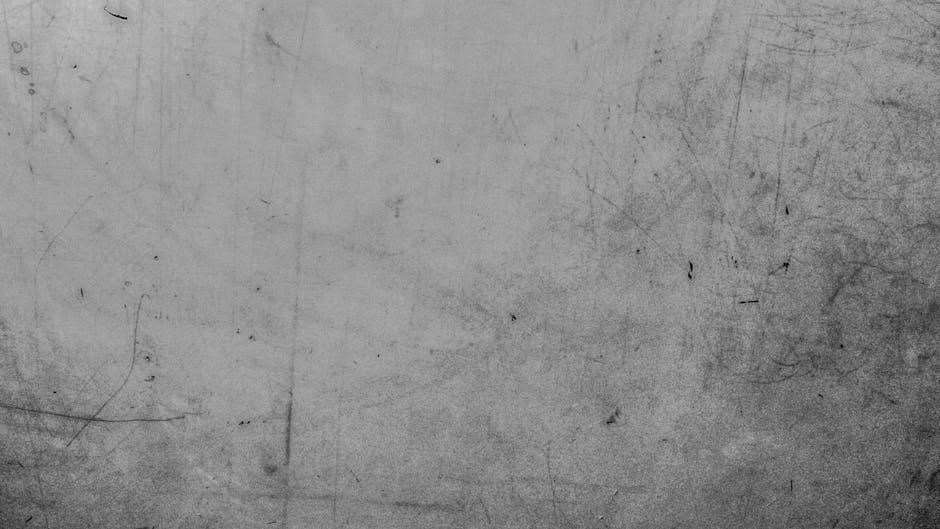
flat stanley printable pdf
Flat Stanley, from Jeff Brown’s 1964 book, is a flat boy who travels the world. Printable PDF templates make him easy to create for educational and fun activities, fostering geography and cultural exchange while customizing his adventures.
What is Flat Stanley?
Flat Stanley is a beloved character from Jeff Brown’s 1964 book, “Flat Stanley,” where a bulletin board makes Stanley flat. This unique trait allows him to travel via mail, exploring the world. Teachers and students use printable PDF templates to create their own Flat Stanley, decorating and sending him on adventures. This engaging activity teaches geography, creativity, and cultural exchange, making Stanley a timeless educational tool for fostering learning and fun. His flat form makes him easy to mail, sparking imaginative journeys and storytelling opportunities for children worldwide.
The Original Story and Concept
Flat Stanley originated from Jeff Brown’s 1964 children’s book, “Flat Stanley,” where Stanley Lambchop becomes flat after a bulletin board falls on him. This unique condition allows Stanley to travel in envelopes, exploring the world. The story inspired an educational project where students create their own Flat Stanley using printable PDF templates, decorating and mailing him to explore new places. This concept promotes learning through adventure, encouraging children to engage with geography, culture, and creative writing while sharing Stanley’s journeys with others.
Educational Benefits of Flat Stanley
Flat Stanley projects offer numerous educational benefits, fostering creativity, critical thinking, and collaboration. Students develop geography skills by tracking Stanley’s travels and cultural awareness by exploring new places. The activity enhances storytelling and writing abilities as students document Stanley’s adventures. It also encourages problem-solving and responsibility, making learning engaging and fun. Using printable PDF templates simplifies the process, allowing educators to integrate the project seamlessly into curricula. This hands-on approach promotes active learning and long-term engagement, making it a valuable tool for modern education.
Cultural Impact and Popularity
Flat Stanley has become a cultural phenomenon, inspiring millions of students and educators worldwide. Originating from Jeff Brown’s 1964 book, the character has evolved into a global educational icon. The project’s simplicity and creativity have made it a beloved activity, fostering a sense of community and shared learning. Printable PDF templates have further increased its accessibility, allowing classrooms and families to participate easily. Its enduring popularity lies in its ability to connect people across cultures, making it a timeless and unifying educational tool that continues to grow in popularity.

How to Create Your Flat Stanley
Download a Flat Stanley printable PDF template, customize with personal touches, print, assemble, and add details for a unique and ready-to-travel companion.
Downloading and Printing the Template
Find a Flat Stanley printable PDF template online, ensuring it’s high-resolution for clarity. Use cardstock for durability and vibrant colors for visual appeal. Print using standard settings, selecting A4 or letter size depending on your printer. Avoid resizing to maintain proportions. For best results, use a color printer to bring Stanley to life. Download from trusted sources like official websites or educational platforms to guarantee quality. Always preview the template before printing and consider a test print on regular paper to check alignment and scaling.
Designing and Customizing Your Flat Stanley
Personalize your Flat Stanley by adding unique details using markers, colored pencils, or digital tools. Start with the printable PDF template, then customize Stanley’s appearance to reflect your personality or cultural background. Add accessories like hats, glasses, or clothing to make him stand out. Experiment with patterns, stickers, or textures for a creative touch. For digital customization, use software to edit the PDF before printing, allowing for intricate designs. Ensure your design is durable for travel by laminating or using sturdy materials. Let your imagination shine to create a one-of-a-kind Flat Stanley!
Materials and Tools Needed
To create your Flat Stanley, gather essential materials like a printer, high-quality paper or cardstock, scissors, glue or tape, and markers. A laminator can add durability for extended use. Optional tools include craft supplies like stickers, stencils, or fabric for customization. Digital design software may also be useful for editing the PDF template. Ensure you have a stable workspace to cut and assemble your Flat Stanley accurately. Proper materials will ensure your project is both durable and visually appealing for its adventures.
Step-by-Step Assembly Guide
Start by cutting out Flat Stanley from the printed PDF template. Carefully follow the outlined edges to ensure accuracy. Next, add details like eyes, a mouth, and clothing using markers or colored pencils. For durability, laminate the cutout or glue it onto cardstock. Fold the tabs inward to secure any attachments, such as a pocket or envelope for mailing. Finally, assemble any additional accessories, like a hat or bag, and attach them securely. Your Flat Stanley is now ready for adventures and educational projects, ensuring it withstands travel and handling.

Flat Stanley Printable PDF Templates
Flat Stanley printable PDF templates offer customizable designs for educational and creative projects. They provide pre-designed layouts, making it easy to print and assemble your Flat Stanley character. These templates are perfect for classrooms, home use, or travel adventures, ensuring a fun and engaging experience for students and families alike.
Where to Find Free Flat Stanley Templates Online
Free Flat Stanley printable PDF templates are widely available online through educational websites, teachers’ resource platforms, and creative design sites. Popular destinations include Teachers Pay Teachers, Google Classroom resources, and Pinterest boards dedicated to classroom activities. Additionally, the official Flat Stanley Project website offers downloadable templates for both students and educators. These templates are designed to be user-friendly, allowing easy customization for various educational and creative purposes. They are perfect for classroom projects, home activities, or travel adventures, making them accessible to everyone who wants to engage with the Flat Stanley experience.
Features of High-Quality Flat Stanley PDFs
High-quality Flat Stanley PDFs typically include crisp, high-resolution images and clear, legible text for optimal printing results. They often feature customizable fields for names, dates, and personal details. Many templates are designed with laminated surfaces in mind, ensuring durability for travel and handling. They are usually compatible with standard paper sizes like A4 or letter for easy printing. Vibrant colors and professional designs enhance visual appeal, while interactive elements like editable layers may be included for personalization. These features make Flat Stanley PDFs ideal for educational and creative projects.
How to Edit and Personalize the Template
To edit and personalize a Flat Stanley printable PDF, use software like Adobe Acrobat or free tools like Smallpdf. Add text, such as names or captions, using the text editing tools. Upload images or logos to customize the design further. Adjust colors and fonts to match your preferences. Save the edited file to ensure your changes are preserved. Print the personalized template on sturdy paper for durability. This process allows you to create a unique and engaging Flat Stanley tailored to individual or classroom needs, enhancing creativity and participation.
Downloading and Printing Tips
When downloading a Flat Stanley PDF, ensure your internet connection is stable to avoid corrupted files. Choose high-quality templates with clear linework for crisp printing. Print on sturdy cardstock or matte paper for durability. Set your printer to “Actual Size” or “100%” scaling to maintain proportions. Use borderless settings if available for seamless edges. Allow ink to dry completely before handling or cutting. For best results, print in landscape orientation and adjust margins as needed. Proper printing ensures a professional finish for your Flat Stanley project.

Flat Stanley Activities and Projects
Engage in creative and educational adventures with Flat Stanley, fostering storytelling, geography exploration, and collaborative learning through fun, interactive projects for students of all ages.
Travel Adventures with Flat Stanley
Flat Stanley’s travel adventures offer a fun way to explore new places while fostering creativity and curiosity. Using the Flat Stanley printable PDF, students can send their character on exciting journeys. Whether traveling to local landmarks or international destinations, Stanley’s adventures encourage learning about different cultures and geography.
Students can document Stanley’s travels through photos and stories, creating a portfolio of memorable experiences. This activity also promotes collaboration and storytelling, making it a beloved educational tool for classrooms and homes alike.
Flat Stanley printable PDF templates make it easy to start these adventures, ensuring endless opportunities for exploration and creativity.
Geography and Mapping Activities
Flat Stanley printable PDF templates are a great tool for teaching geography and mapping skills. Students can use Stanley to explore and map different locations, learning about coordinates, countries, and continents. By tracking Stanley’s travels on a world map, students develop spatial awareness and understand how locations are connected. Teachers can assign activities where students mark Stanley’s journey, creating a visual representation of his adventures. This hands-on approach makes learning geography engaging and interactive, while fostering a deeper understanding of the world’s layout and cultural diversity.
Storytelling and Creative Writing Ideas
Flat Stanley printable PDF templates inspire creative storytelling and writing. Students can craft journals or narratives detailing Stanley’s adventures, imagining his thoughts and experiences. This activity fosters imagination and writing skills, encouraging students to describe settings, characters, and events. Teachers can assign prompts like dialogue creation or scenario planning, helping students develop plot structure and descriptive language. By integrating Stanley into stories, students connect creatively with the character, making learning fun while enhancing their literary skills and confidence in self-expression.
Classroom and Group Projects
Flat Stanley printable PDF templates are ideal for collaborative classroom and group projects. Students can work together to design and customize multiple Stanleys, fostering teamwork and creativity. Group activities include creating shared journals, mapping Stanley’s travels, or developing skits based on his adventures. Teachers can assign roles, such as researchers, writers, or artists, to engage all students; These projects promote problem-solving, communication, and shared responsibility while aligning with curriculum goals. Collaborative efforts enhance learning and make Flat Stanley’s journey a memorable classroom experience for everyone involved.

Flat Stanley in the Classroom
Flat Stanley printable PDFs bring engaging, hands-on learning to classrooms, fostering creativity and geographical exploration while encouraging collaboration and storytelling among students of all ages.
Integrating Flat Stanley into Lesson Plans
Flat Stanley printable PDFs seamlessly integrate into lesson plans by providing engaging activities that align with curriculum goals. Teachers can use the PDFs to introduce Stanley’s story, fostering creativity and curiosity. Classroom projects often involve sending Stanley on virtual or real-world travels, encouraging students to explore geography, history, and cultural studies. The PDF templates also support writing exercises, where students document Stanley’s adventures. This approach promotes collaborative learning, critical thinking, and problem-solving skills, making it a versatile tool for cross-curricular integration and student engagement.
Cross-Curricular Learning Opportunities
Flat Stanley printable PDFs offer a wealth of cross-curricular learning opportunities, making them a versatile educational tool. Students can explore geography by mapping Stanley’s travels, while history comes alive through research of the places he visits. Language arts are enriched as students write stories or journals about Stanley’s adventures; Even science and math can be incorporated, such as calculating distances or observing environmental changes. These activities foster interdisciplinary thinking and connect learning to real-world experiences, making education engaging and holistic for students of all ages.
Encouraging Student Participation and Engagement
Flat Stanley printable PDFs are an excellent way to encourage student participation and engagement in the classroom. By involving students in designing and sharing their own Flat Stanley, teachers can foster creativity and collaboration. Group discussions about Stanley’s adventures or travels can spark curiosity and teamwork. Additionally, allowing students to share their experiences online or in class presentations motivates them to take ownership of their learning. These interactive activities make education fun and engaging, ensuring students remain enthusiastic and invested in their educational journey.
Assessment and Feedback Strategies
Educators can assess student progress by evaluating their Flat Stanley printable PDF projects. Reviewing the completed templates and accompanying stories provides insights into creativity, attention to detail, and understanding of the concept. Feedback should be constructive, highlighting strengths and offering suggestions for improvement. Teachers can use rubrics to grade projects based on design, storytelling, and adherence to guidelines. Peer reviews also encourage collaborative learning and self-reflection. Regular check-ins ensure students stay on track, fostering a supportive and structured learning environment.

Advanced Customization Ideas
Explore creative ways to enhance Flat Stanley printable PDFs. Use digital design tools, add accessories, or incorporate 3D elements for unique, interactive models that stand out.
Digital Design Tools for Flat Stanley

Digital design tools like Adobe Illustrator, Canva, or Procreate can transform your Flat Stanley printable PDF. Use these tools to edit, customize, and enhance the template with vibrant colors, patterns, and unique designs. Add text, shapes, or even animations to make Flat Stanley interactive. These tools allow for precise adjustments, enabling users to create personalized versions tailored to specific themes or projects. Digital customization not only boosts creativity but also makes Flat Stanley more engaging for educational or creative endeavors, ensuring a one-of-a-kind experience for students and enthusiasts alike.
Adding Accessories and Props
Enhance your Flat Stanley printable PDF by adding accessories and props to make him more engaging and personalized. Use items like hats, glasses, or bags to create unique looks. Attach small props such as mini flags, cameras, or books to reflect his adventures. You can craft these from paper, fabric, or recycled materials. This creative process encourages imagination and adds depth to Stanley’s character. Ensure props are securely attached using non-toxic glue or tape for durability. These details make Flat Stanley more interactive, fostering a fun and immersive learning experience for students of all ages.
Creative Materials for Decoration
Elevate your Flat Stanley printable PDF by incorporating creative materials for decoration. Use colorful markers, stickers, or stamps to add vibrant details. Experiment with fabric scraps, glitter, or textured paper for a unique look. Incorporate natural elements like leaves or flowers for an earthy feel. Eco-friendly materials, such as recycled paper or cardboard, can also add an educational twist. These decorative touches make Flat Stanley visually appealing and encourage creativity, fostering engagement in educational activities and adventures.
3D and Interactive Flat Stanley Models
Take Flat Stanley to the next level with 3D and interactive models. Use cardboard, foam, or paper mache to create a three-dimensional version, adding depth and texture. Incorporate movable parts, like arms and legs, for poseable adventures. Add interactive elements, such as buttons or flaps, to engage users. For a modern twist, integrate QR codes or augmented reality features to bring Flat Stanley to life digitally. These models enhance storytelling, encourage creativity, and provide hands-on learning experiences, making them perfect for classrooms or home projects.

Sharing Flat Stanley’s Adventures
Share Flat Stanley’s journeys by creating a scrapbook or digital collection. Use printable PDFs to document travels, include photos, and write creative stories for others to enjoy.
Creating a Travel Journal or Scrapbook
A travel journal or scrapbook for Flat Stanley is an excellent way to document his adventures. Use a printable PDF template to create a structured format with sections for dates, locations, and descriptions of Stanley’s experiences. Include spaces for photos, maps, and mementos like ticket stubs or postcards. Add creative elements such as stickers or drawings to make it visually appealing. Bind the journal using a three-ring binder or spiral binding for easy customization. Consider creating a digital version to share online or printing copies to give to hosts. Ensure the scrapbook is both functional and fun, serving as a meaningful keepsake that captures the essence of Stanley’s travels and learning experiences.
Photography and Documentation Tips
When documenting Flat Stanley’s adventures, use good lighting and creative angles to capture high-quality photos. Experiment with different poses and backgrounds to make the images engaging. Consider using a tripod for stability, especially in outdoor settings. For digital documentation, organize photos in a dedicated album or timeline. Edit photos lightly to enhance clarity and vibrancy without over-processing. Add captions or notes to describe each scene, providing context for Stanley’s journeys. Store backups on reliable platforms to ensure memories are preserved. These tips help create a visually appealing and well-documented record of Flat Stanley’s travels and experiences.
Sharing Online and Social Media
Sharing Flat Stanley’s adventures online and on social media is a great way to connect with others and showcase creative journeys. Use platforms like Instagram, Facebook, or Twitter to post photos and stories. Include hashtags like #FlatStanley or #FlatStanleyProject to join larger communities. Create engaging captions that describe Stanley’s experiences and locations. Tag friends, family, or classmates to encourage interaction. Consider creating a dedicated account or album for consistent updates. Sharing online fosters collaboration, sparks inspiration, and celebrates the fun of Flat Stanley’s travels with a global audience. Regular updates keep followers engaged and excited.
Hosting a Flat Stanley Exhibition
Hosting a Flat Stanley exhibition is a fantastic way to showcase the adventures and creativity of students. Display photos, stories, and artwork featuring Flat Stanley’s journeys in a school hallway, library, or community center. Set up display boards or tables with captions explaining each exhibit. Include interactive elements like maps or journals for visitors to explore. Involve students in the setup to encourage ownership and pride. The exhibition fosters a sense of accomplishment and shared learning, while celebrating the diverse experiences of Flat Stanley’s travels. It also engages parents, teachers, and the community in the educational journey.

Troubleshooting and Tips
Ensure your printer settings match the PDF dimensions to avoid scaling issues. Use high-quality paper for clarity and durability. If ink smudges, let it dry fully.
Common Issues with Printing and Assembly
When printing, ensure your printer settings match the PDF dimensions to prevent scaling errors. Misalignment during assembly can occur if tabs or folds are not properly aligned. Use a ruler or craft tool to create sharp creases for easier folding. Printed areas may smudge if handled immediately—allow ink to dry fully. For stability, print on cardstock or thicker paper. Test prints on scrap paper first to avoid wasting materials. Addressing these issues early ensures a smooth and polished final product for your Flat Stanley project.
Storage and Transportation Solutions
For safe storage, keep Flat Stanley in a protective folder or envelope to prevent bending or tears. Use a sturdy cardboard case or plastic sleeve for added durability. When transporting, place him in a sealed envelope or small box to avoid damage. Label the exterior with your contact information. Consider using clear plastic sleeves for easy viewing while protecting the design. Store in a dry, cool place to maintain print quality. For group projects, organize multiple Stanleys in a binder with labeled sections. Reusable materials like cardboard or fabric pouches can also be used for eco-friendly storage.
Repairing and Maintaining Flat Stanley
To repair Flat Stanley, use clear tape or glue sticks for minor tears. For creases, gently flatten with a ruler or iron on low heat. Replace damaged sections by reprinting and attaching the relevant parts. Prevent wear by laminating the paper before use. Store in a protective case or folder when not in use. Handle with clean, dry hands to avoid smudging. Regularly inspect for damage and address issues promptly. For long-term use, consider printing on sturdy cardstock or reinforcing with cardboard backing.
Encouraging Long-Term Engagement
To keep students invested in Flat Stanley projects, set clear, achievable milestones and celebrate progress. Encourage students to share updates regularly, fostering a sense of accountability. Incorporate peer feedback and collaboration to build a community around the project. Rotate leadership roles to give everyone a chance to guide activities. Use incentives like badges or recognition to motivate continued participation. Emphasize the real-world connections, such as geography or storytelling, to sustain interest over time. Regularly introduce new challenges or themes to refresh the experience and keep it exciting for all participants.

Flat Stanley printable PDFs continue to inspire creativity and learning, offering endless opportunities for educational growth. Future innovations may include digital enhancements and expanded curricular applications.
The Legacy of Flat Stanley
Flat Stanley’s legacy endures as a beloved educational tool, inspiring creativity and curiosity across generations. The printable PDF format has democratized access, making Stanley a cultural icon. His ability to bridge storytelling, geography, and art has cemented his place in education. Students worldwide have embraced Stanley’s adventures, fostering global connections and a sense of adventure. The simplicity of the printable design ensures his legacy continues to evolve, remaining a timeless symbol of learning and fun.
Expanding the Concept Beyond the Classroom
Flat Stanley’s printable PDF has transcended traditional education, becoming a versatile tool for community engagement and global connections. Families, libraries, and youth organizations use Stanley for creative projects, fostering learning outside school. Scouting groups and cultural clubs incorporate him into activities, promoting teamwork and cultural exchange. Digital platforms now host Stanley’s adventures, enabling global sharing and collaboration. This expansion highlights Stanley’s adaptability, making him a timeless resource for diverse audiences, encouraging creativity and curiosity beyond the classroom walls.
Innovative Uses of Flat Stanley in Modern Education
Flat Stanley’s printable PDF has inspired modern educational strategies, blending traditional storytelling with digital tools. Educators now integrate Stanley into virtual field trips, where students explore global landmarks through online platforms. Digital storytelling platforms allow students to create interactive adventures, enhancing literacy and tech skills. Additionally, Stanley is used in cross-curricular projects, linking geography, art, and STEM. His versatility fosters collaboration, as classrooms worldwide share their Stanley journeys online, promoting global connections and cultural exchange in a modern, tech-driven learning environment.


Leave a Reply
You must be logged in to post a comment.